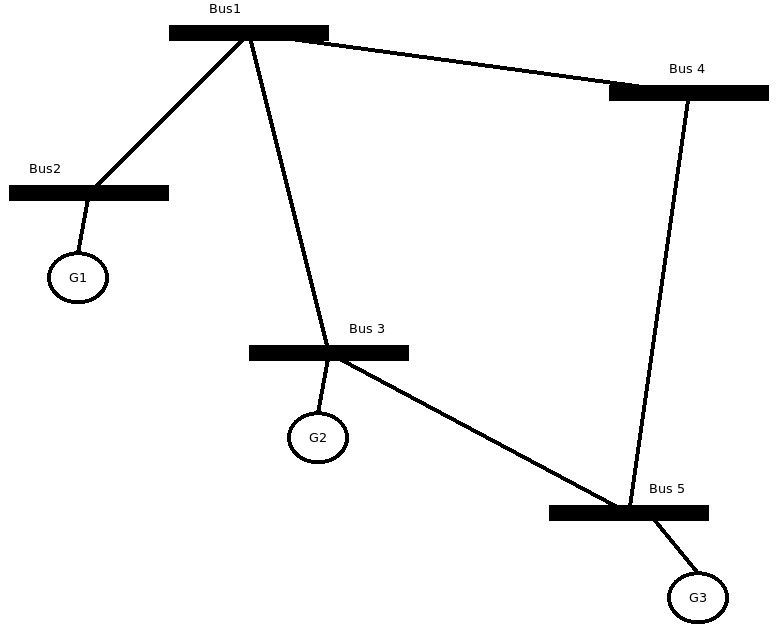Connectivity Matrix¶
This section explains how to build a CSC connectivity matrix directly with no intermediate LIL matrix.

The connectivity matrix is as follows:
Bus1 |
Bus2 |
Bus3 |
Bus4 |
Bus5 |
|
|---|---|---|---|---|---|
G1 |
1 |
||||
G2 |
1 |
||||
G3 |
1 |
This matrix in CSC format is:
indptr = [0, 0, 1, 2, 2, 3]
indices = [0, 1, 2]
data = [1, 1, 1]
The following code exemplifies the concept of building a CSC connectivity matrix directly.
import numpy as np
from CSparse3.csc import CscMat
# declare the Bus class
class Bus:
def __init__(self, name, gen):
self.name = name
self.gen = gen
# declare the generator class
class Gen:
def __init__(self, name, p=0):
self.name = name
self.p = p
# build the example
buses = [Bus('Bus1', []),
Bus('Bus2', [Gen('G1', 10)]),
Bus('Bus3', [Gen('G2', 20)]),
Bus('Bus4', []),
Bus('Bus5', [Gen('G3', 30)])]
# count the elements to declare the matrices
ng = 0
nb = len(buses)
for b in buses:
ng += len(b.gen)
# declare the connectivity matrix
gen_conn = CscMat(ng, nb, nz_max=ng)
p = np.zeros(ng)
gi = 0 # this is the total generator counter
for i, b in enumerate(buses):
for k, g in enumerate(b.gen):
gen_conn.indices[gi] = gi # store the row indices
gen_conn.data[gi] = 1 # set the value
p[gi] = g.p
gi += 1
gen_conn.indptr[i + 1] = gi # store the column pointer when the bus changes
gen_conn.indptr[nb] = gi # store the last column pointer
print('Generator-Bus connectivity matrix')
print(gen_conn.todense())
print('indptr = ', gen_conn.indptr)
print('indices = ', gen_conn.indices)
print('data = ', gen_conn.data)
print('Bus power injections')
print(gen_conn.t() * p)
The output is the following:
Generator-Bus connectivity matrix
[[0. 1. 0. 0. 0.]
[0. 0. 1. 0. 0.]
[0. 0. 0. 0. 1.]]
indptr = [0 0 1 2 2 3]
indices = [0 1 2]
data = [1. 1. 1.]
Bus power injections
[ 0. 10. 20. 0. 30.]